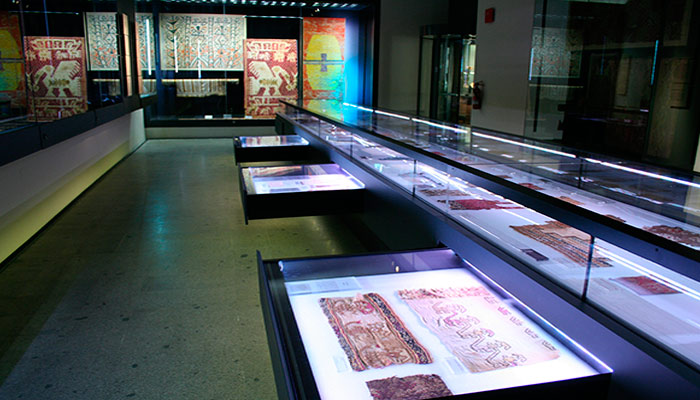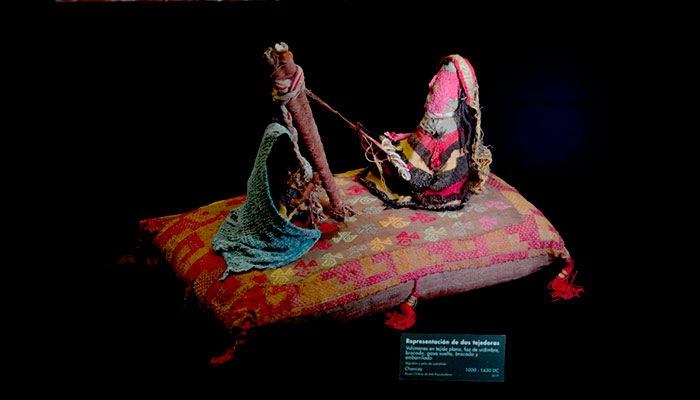Chimu, Labyrinths of a sacred costume
Lighting of pre-Columbian textiles
Exposure to light causes irreversible damage to the organic and certain inorganic materials in textiles. The damage can be visible, as in the case of fading or changes in color, or less perceptible to the eye, such as the weakening of the microscopic structure of the material. There are three components in light that can cause damage and that must be controlled in order to be able to exhibit these textiles: visible light, ultraviolet radiation (UV), and infrared radiation (IR).
UV radiation is a natural component of sunlight which is also produced by artificial lighting, especially by fluorescent and halogenic lighting. It is one of the principal causes of color loss in textiles. According to international norms for museums, it is obligatory to filter UV radiation, when its proportion in the lighting surpassed 75 uW/lumen.
IR radiation is produced by the heat emanated by solar, as well as incandescent light. This heat can cause an exponential elevation in the rate of deterioration in textiles through the acceleration of the chemical reactions and the drying out of organic materials, seriously affecting the structure of the textile.





































